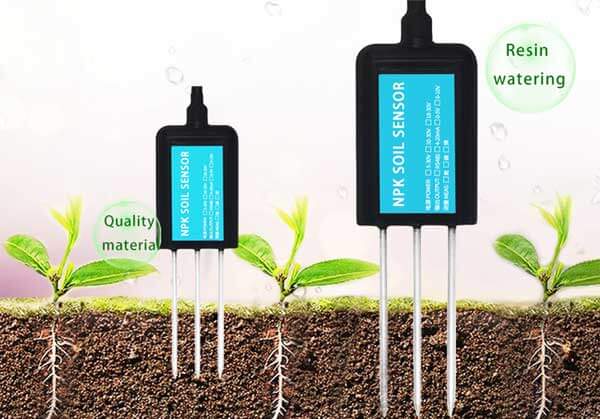Soil is a vital natural resource that plays a significant role in sustaining life on our planet. It provides nutrients and anchorage for plants, acts as a filter for water, and stores carbon. However, soil quality has been declining due to factors such as climate change, deforestation, and intensive agriculture, which have led to soil degradation and erosion. To address this issue, scientists and engineers have developed soil sensor technology to monitor and improve soil quality.

Soil sensors are devices that measure various parameters of soil such as moisture, temperature,
These sensors provide real-time data that can be analyzed to determine the condition of the soil system and identify potential issues. With this information, farmers and policymakers can take necessary actions to improve the soil quality and protect the environment.
One of the most significant advantages of using soil sensors is the ability to detect soil issues quickly
Traditional methods of monitoring soil health involve collecting soil samples and sending them to a laboratory for analysis. This process can take days, weeks, or even months, depending on the location of the sample and the type of pollutant being tested. In contrast, soil sensors provide instantaneous results, allowing for immediate action to be taken if necessary.
Another advantage of using soil sensors is the ability to monitor soil health continuously
Traditional methods of monitoring soil health only take periodic measurements, which may not provide an accurate representation of the soil system’s overall health. With continuous monitoring, changes in soil quality can be detected immediately, allowing for quick interventions to prevent further degradation.
Soil sensors can also help reduce the cost of monitoring soil quality
Traditional methods of monitoring soil quality require the collection of numerous soil samples, which can be expensive and time-consuming. In contrast, soil sensors require minimal maintenance and can be installed at multiple locations throughout a soil system, providing comprehensive monitoring at a lower cost.
One of the most significant applications of soil sensors is in the management of agriculture
Agriculture accounts for a significant amount of land use globally, and soil quality is critical to crop yields and sustainability. Soil sensors can monitor the condition of the soil and provide farmers with real-time data on moisture levels, nutrient levels, and other factors that affect crop production. This information can help farmers make informed decisions about irrigation, fertilizer application, and other practices that can improve soil health and conserve resources.
Soil sensors are also being used in various other areas, including environmental monitoring
land management, and urban planning. In environmental monitoring, soil sensors can detect changes in soil quality due to pollution or other environmental factors. In land management, soil sensors can help identify areas of soil erosion and other issues that require intervention. In urban planning, soil sensors can be used to monitor soil quality in urban green spaces, ensuring they remain healthy and vibrant.

Despite the benefits of using soil sensors
there are some challenges associated with their use. One of the major challenges is the need for calibration and maintenance. Soil sensors require regular calibration to ensure accurate measurements, and they must be properly maintained to prevent damage or malfunction.
Another challenge is the need for standardization
There are numerous types of soil sensors available, each with its own set of parameters and measurement techniques. To ensure that data collected from different sensors is comparable and accurate, there is a need for standardized methods of calibration and measurement.
In conclusion, soil sensor technology has revolutionized the way we monitor and manage soil quality.
They provide real-time data that can be used to identify potential issues and take necessary actions to prevent further degradation. With their ability to detect soil issues quickly, monitor soil quality continuously, and reduce the cost of monitoring, soil sensors have become an essential tool in sustainable agriculture and land management efforts. Although there are challenges associated with their use, the benefits of using soil sensors far outweigh these challenges.
